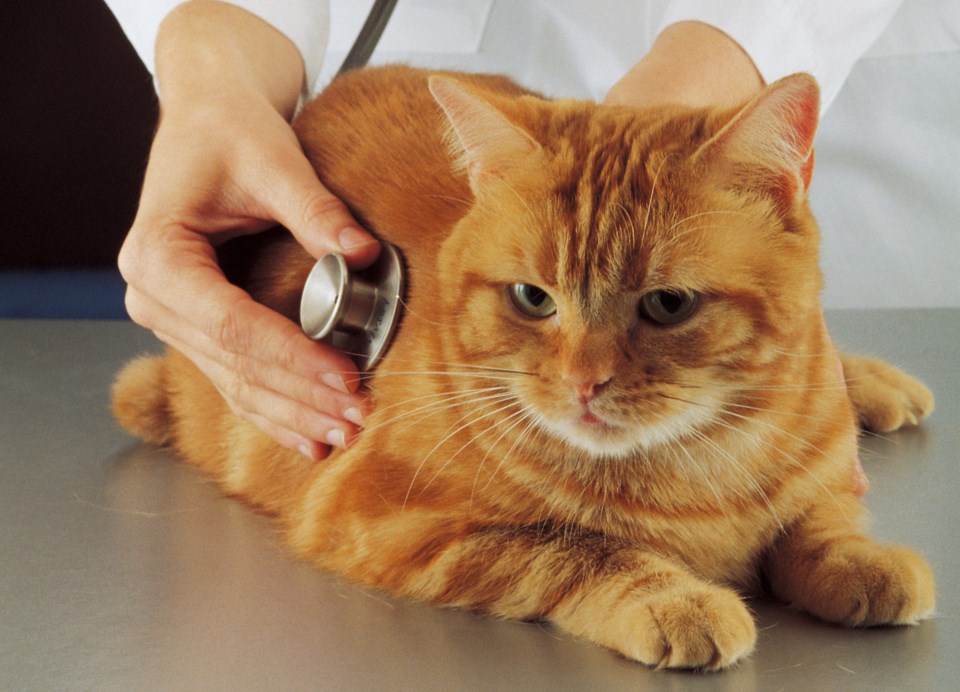Alberta veterinarians supported a resolution to ban all surgical procedures considered unnecessary or cosmetic following a vote in Calgary on Sunday.
The Alberta Veterinary Medical Association (ABVMA) resolution gained 98 per cent support from nearly 300 members and is being lauded by animal protection agencies and veterinarians alike.
Dr. Silvia Dimigen, with Arrowhead Veterinarian Clinic in Cochrane, said the changes are long overdue and she is looking forward to them being legislated.
She described many of the procedures as inhumane, highlighting declawing in cats as especially cruel, akin to amputating a finger. She added tail docking and ear cropping can result in chronic pain and said claims the former prevents tail injuries are unsubstantiated.
With more provinces adopting similar laws, Dimigen adds people will also not be able to simply hop borders to receive the procedures and warns performing them without a veterinarian is tantamount to animal abuse.
Dimigen said the new guidelines also affirm feelings of veterinarians across the province where it is already difficult to obtain the procedures.
“There is 100 per cent support of the veterinarian community – I guess 98 per cent support,” she said.
The Cochrane and Area Humane Society (CAHS) stated in a written response that it was pleased the resolution was supported.
“CAHS is opposed to surgical alterations of companion animals for cosmetic reasons, such as tail docking, ear cropping, and supports the abolition of such practices,” the statement read, specifically highlighting the ban on declawing of cats. “It is the responsibility of cat owners to become educated on the subject of declawing and its alternatives.”
CAHS added such procedures have no benefit to animals and are detrimental to health.
“We have observed behavioural consequences resulting from the declawing of cats. Scratching is a normal feline behaviour and when cats are unable to express a normal behaviour we can see temperament changes and cats resorting to using their teeth as their paws no longer have a defense mechanism,” the society stated. “Too often cats are declawed before owners educate themselves and research humane alternatives when destructive clawing behaviour can often be curbed.”
Not everyone is backing the changes, organizations supporting breeders, especially those with specialty breeds that choose tail docking and ear cropping for what they say are for more than just aesthetics, are disappointed.
“The Doberman Pinscher Club of Canada (DPCC) is disappointed with the current decision made by the association members present at the recent ABVMA general meeting,” said Angela Merrick, vice-president of the club. “The recent decision conveys to us that our thoughtfully bred dogs, and the preservation of the Doberman breed is not important to the veterinary community as a whole.”
According to the club, cropping, docking and dewclaw removal have a long-standing history as being part of common and acceptable animal husbandry practices.
“Our goal has always been to prevent unnecessary injury and to help our dogs perform their intended jobs,” Merrick stated.
She also challenged the ABVMA president’s statement in the media where he said there is not enough scientific evidence to show these procedures are necessary. Merrick said there is not enough research to support that statement.
“The DPCC feels at this time an effort should be made to thoroughly study these practices before making decisions based on emotion and public pressure,” Merrick said. “Decisions such as these have a way of opening the door to many other unintended consequences. Our valued preservation breeders know this will negatively impact our breed and its health and wellness. “
However, Dimigen disputes Merrick’s reasoning saying that breeds such as rottweilers and Doberman Pinschers in Germany – where both breeds originated – sport long tails and floppy ears because docking and cropping have been outlawed for two decades.
“They actually look better that way,” she said.
A second resolution that will compel veterinarians to report animal abuse or neglect was also supported. Under those guidelines, which are meant to enhance current animal protection laws, veterinarians will have a more concrete definition of abuse ranging from physical abuse to neglect.
The resolutions will be forwarded to the province recommending changes to legislation. Once enshrined in law, veterinarians will be subject to disciplinary action if they perform the procedures that have been deemed unnecessary.
Definition of abuse:
• Malicious or inappropriate infliction of physical injury
• Sexual or mental abuse
• Poisoning, asphyxia, drowning, and evidence of organized dog fighting.
• Neglect: the failure to provide animals with adequate basic necessities supporting health and well-being for extended periods leading to suffering, serious injury or death. This includes food and water, medical attention when wounded or ill, protection from injurious weather, adequate space, sanitary housing, ventilation and lighting, opportunity for exercise, and a stimulating social environment that prevents the induction of a negative emotional or psychological state.
Banned procedures
• Ear cropping
• Tail docking (removing portions of an animal’s tail)
• Tail nicking (cutting and resetting a tail ligament to heal in a raised position)
• Tail blocking (numbing or nicking tendons to paralyze the tail)
• Partial digit amputation (also called declawing or onychectomy, in which all or part of the distal phalanges, or end bones, of the animal’s toes are cut off)
• Tendonectomy (removing tendons from a cat’s toes to prevent it from extending the claws, done as an alternative to onychectomy)
• Front dewclaw removal
• Cosmetic dentistry
• Body piercing
• Tattooing that is not for the purpose of registration and identification
• Devocalization (removing tissue from the animal’s vocal cords to permanently reduce the volume of its vocalizations)
The Alberta Veterinary Medical Association (ABVMA) is the professional regulatory organization governing the practice of veterinary medicine in Alberta under the authority of the Veterinary Profession Act.
The ABVMA is responsible for ensuring that all vets in the province are qualified to practise veterinary medicine




